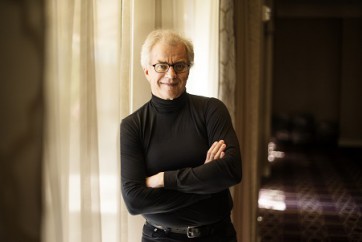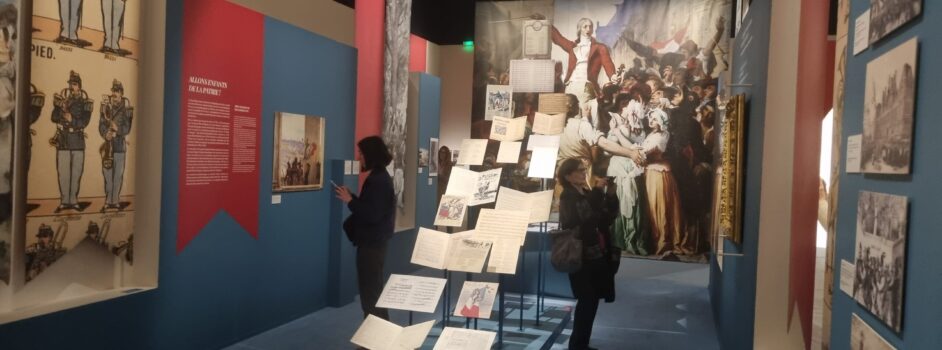Plus de détails
Helsinki. Helsinki Music Centre. 25-IV-2017. Arvo Pärt (b. 1935): Cantus in Memoriam Benjamin Britten; Kalevi Aho (b. 1949): Sieidi; Jean Sibelius (1865-1957): Symphony No. 4, op. 63. Colin Currie: percussion; Helsinki Philharmonic Orchestra, conductor: Osmo Vänskä
 Osmo Vänskä is unrivaled in his ability (and willingness) to explore the deepest depths of Sibelius' Symphony No. 4.
Osmo Vänskä is unrivaled in his ability (and willingness) to explore the deepest depths of Sibelius' Symphony No. 4.
Osmo Vänskä earned himself and his former band (the Lahti Symphony Orchestra) international recognition with his series of Sibelius and Kalevi Aho recordings. Authoritative performances of these two composers was expected from this evening's performance, and Vänskä and the Helsinki Philharmonic Orchestra did not disappoint.
The program opened with one of the Estonian composer Arvo Pärt's most popular works, his Cantus in memoriam Benjamin Britten. While deceptively simple and appearing to pose minimal challenges for the strings-only orchestra, the genius of this work lies in its immediate and poignant emotional effectiveness. Vänskä's interpretation took this effectiveness a step further. Vänskä coaxed the most haunting, ascetic pianissimo at the work's opening, but also provided a consoling warmth in the grinding white-key dissonances in the lower registers. This was a performance that not only expressed grief but also transcended it.
Many of Aho's major works from the current century present a clear influence from shamanistic or non-Western musical traditions. Some examples include the Symphony No. 14, Oboe Concerto, and Minea. These influences were also present in Sieidi, a concerto for percussion and orchestra performed this evening.
Aho's use of the solo percussion followed an arc shape; beginning with djembe, darabuka, and tom-toms, then moving on to marimba and vibraphone, followed by woodblocks and tam-tam. This order is then reversed in the second half of the work.
The opening of the work was declamatory and ritualistic, with virtuosic solo turns on the darabuka and djembe. The first orchestral tutti, while savage and dissonant, seemed to occupy a different stylistic world than the one created by the soloist. Aho then moved to slow, hypnotic textures, marked by his fingerprint parallel fifths on the marimba. The tam-tam climax was exciting (if somewhat brief), but Aho saved some of the best for the second half: the dialogue between woodwinds and bowed vibraphone, and the final flourish on tom-toms and snare were both effective and inspired. Soloist Colin Currie probably made it through this entire virtuosic showpiece without breaking a sweat, such was his formidable technique and confidence. Vänskä provided a sensitive accompaniment that not only supported the soloist but also highlighted Aho's orchestral invention.
Vänskä conducting Sibelius is always a special event, and this performance of the Symphony No. 4 was no different. While there are certainly many valid ways to present this introverted masterpiece, Vänskä's fearless exploration of the work's dark emotions is unique.
The opening movement came across as slightly protracted, as if every single note was the product of a painful and lengthy deliberation. Under Vänskä's baton, the relatively sunny opening to the second movement offered no relief to the tension and uncertainty established from the previous movement. The impending storm was menacing, almost violently so. In the third movement, arguably Vänskä's specialty of specialties, Vänskä injected a clear sense of vitality into the opening flute solo, as if trying to coax new life out of the desolate surroundings. As the movement progressed, Vänskä probed into the music's depths, deeper and deeper, until the the main climax, which was (to me at least) searingly, painfully cathartic. In the final movement, Vänskä brought an extra sense of boisterousness to the clumsily celebratory proceedings, while also shaping every shade and contour of the strings during their tonal clash with the woodwinds.
This performance demonstrated, yet again, that Vänskä is unrivaled in his ability (and willingness) to explore the deepest depths of Sibelius' Symphony No. 4.
Credit photo: Osmo Vänskä © Kaapo Kamu
Plus de détails
Helsinki. Helsinki Music Centre. 25-IV-2017. Arvo Pärt (b. 1935): Cantus in Memoriam Benjamin Britten; Kalevi Aho (b. 1949): Sieidi; Jean Sibelius (1865-1957): Symphony No. 4, op. 63. Colin Currie: percussion; Helsinki Philharmonic Orchestra, conductor: Osmo Vänskä






